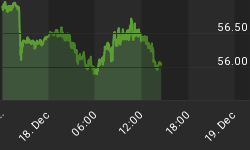To counter the increasing demands that government reduce its micromanagement of the economy, last week the Obama Administration offered a fig leaf in the form of a white paper entitled "Reforming America's Housing Finance Market." In addition to marking the official end of the Bush era "ownership society," where increasing the level of home ownership was a national priority, the document contains a recommended regulatory overhaul of the Federal Housing Authority (FHA) as well as Fannie Mae and Freddie Mac (together known as Government Sponsored Enterprises "GSE's"), that intends to bring the share of government owned home loans from the current 95% to 40% over the next 5-7 years.
In the report, the Obama Administration makes the important admission that government interference in housing had dangerously distorted the market. And, while the goal of reducing the government's footprint in the housing market is certainly laudable, the reform plan is not only too little too late, but fails miserably to address the nucleus of the problem. Even if all the recommendations are adopted, the government would actually extend its explicit guarantees to bail out failing lenders. Most importantly, the proposal completely overlooks the most significant government distortion of the housing market: the Federal Reserve's manipulation of interest rates. Thus, this plan will insure that government's role in the mortgage market will likely expand in the years ahead.
Banks are in the business of borrowing on the short end of the yield curve and lending on the long end. Since interest rates are generally lower for shorter time durations, banks make profits by capturing the spread. But if the gap between long term and short term rates narrow, or sometimes vanish completely, banks have a much harder time operating. Rapid and dramatic changes in interest rates also expose banks to money losing risks.
In a free market, whenever the supply of savings contracts the cost of money tends to increase. Those rising interest rates curb the demand for borrowing and increase the propensity to save. Conversely, increased savings rates lower the price of money, thereby encouraging more borrowing. Consequently, in a free economy market forces tend to stabilize interest rate volatility. However in the United States interest rates are anything but free.
When interest rates are set by a few people behind closed doors, as they are by the Federal Reserve, massive distortions can occur in the supply demand metric. For example, the S&L crisis of the late 80's and early 90's was brought about by the loose monetary policy of the 70's. Rising interest rates, which were a direct response to rising inflation, soon found S&L's paying out more on their short-term borrowed funds than they were collecting on their long term assets. The consequences for those imbalances caused by our central bank rendered nearly one thousand banks insolvent.
To mitigate this problem, early in the last decade banks began turning more and more to securitization as a way to unload the mortgages on their books by packaging and selling loans to outside investors. Not only does securitization bring in fees and reduce banks' risk exposure but it also sucks in more capital to the real estate market, while increasing financial sector profits. It's no wonder that the securitization market grew to over $10 trillion in the U.S. before the credit crisis of 2008. On paper this was a good solution to the problem, but additional government involvement in the securitization market threw in a monkey wrench.
Given the size and diversity of the investment market in the U.S. and around the world, there was adequate private demand for securitized mortgages. With relatively low risk and more generous yields than government debt, pension funds and other institutional investors bought heavily. However, as the Federal Reserve continued to lower rates and as the government engineered housing boom finally went bust, this private label demand dried up almost completely. The GSEs now provide financing for 9 out of 10 mortgages. Therefore, the real estate market today is virtually 100% distorted and manipulated by government forces.
Treasury Secretary Geithner--the President's main pitch man for the program--touted the proposed solution of a hybrid federal reinsurance plan that would include a standing federal catastrophic reinsurer for private guarantors of mortgage-backed securities. The government has already clearly shown that its erstwhile implicit guarantee is now in fact explicit for GSE debt. That condition would remain intact. However, now government involvement would also morph into an explicit guarantee to reinsure private label mortgages. Therefore, in typical government fashion, the proposed reforms are merely a repackaging of the previous sham. Even if the plan were to be successfully carried out, the GSEs would still account for nearly half of all mortgage financing. Only now the government would also back private insurance for private label MBS with yet another explicit guarantee in case of emergency. Who can doubt that such conditions will inevitably arise? As to how this can ever satisfy the need to remove moral hazard or getting the government out of the housing market is beyond me.
In other words, there is no meaningful governmental withdrawal from the market. Most importantly, the plan does nothing to address the Fed's role in making interest rates much lower and more volatile than they would otherwise be. Unfortunately the housing market will remain in government control for years to come and another real estate crisis will inevitably occur
Subscribe to Euro Pacific's Weekly Digest: Receive all commentaries by Peter Schiff, Michael Pento, and John Browne delivered to your inbox every Monday.
Click here for free access to Euro Pacific's new special report: What's Ahead for Canadian Energy Trusts?
Be sure to pick up a copy of Peter Schiff's hit economic fable, How an Economy Grows and Why It Crashes.















